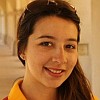|
|
|
|
|
|
|
|
| |
  
Magnus Bordewich,
Charles Semple and
Nihan Tokac. Constructing tree-child networks from distance matrices. In Algorithmica, Vol. 80(8):2240-2259, 2018.
Keywords: compressed network, explicit network, from distances, phylogenetic network, phylogeny, polynomial, reconstruction, tree-child network, uniqueness.
Note: http://www.math.canterbury.ac.nz/~c.semple/papers/BSN17.pdf.
|
|
| |
|
| |
   
Magnus Bordewich,
Katharina Huber,
Vincent Moulton and
Charles Semple. Recovering normal networks from shortest inter-taxa distance information. In JOMB, Vol. 77(3):571-594, 2018.
Keywords: explicit network, from distances, normal network, phylogenetic network, phylogeny, polynomial, reconstruction, uniqueness.
Note: http://www.math.canterbury.ac.nz/~c.semple/papers/BHMS18.pdf.
|
|
|
|
|
|
| |
  
Magnus Bordewich,
Simone Linz and
Charles Semple. Lost in space? Generalising subtree prune and regraft to spaces of phylogenetic networks. In JTB, Vol. 423:1-12, 2017.
Keywords: distance between networks, explicit network, phylogenetic network, phylogeny, reticulation-visible network, SPR distance, tree-based network, tree-child network.
Note: https://simonelinz.files.wordpress.com/2017/04/bls171.pdf.
|
|
|
|
|
|
|
|
|
|
| |
 
Magnus Bordewich and
Charles Semple. Budgeted Nature Reserve Selection with diversity feature loss and arbitrary split systems. In JOMB, Vol. 64(1):69-85, 2012.
Keywords: abstract network, approximation, diversity, phylogenetic network, polynomial, split network.
Note: http://www.math.canterbury.ac.nz/~c.semple/papers/BS11.pdf.
Toggle abstract
"Arising in the context of biodiversity conservation, the Budgeted Nature Reserve Selection (BNRS) problem is to select, subject to budgetary constraints, a set of regions to conserve so that the phylogenetic diversity (PD) of the set of species contained within those regions is maximized. Here PD is measured across either a single rooted tree or a single unrooted tree. Nevertheless, in both settings, this problem is NP-hard. However, it was recently shown that, for each setting, there is a polynomial-time (1-1/e)-approximation algorithm for it and that this algorithm is tight. In the first part of the paper, we consider two extensions of BNRS. In the rooted setting we additionally allow for the disappearance of features, for varying survival probabilities across species, and for PD to be measured across multiple trees. In the unrooted setting, we extend to arbitrary split systems. We show that, despite these additional allowances, there remains a polynomial-time (1-1/e)-approximation algorithm for each extension. In the second part of the paper, we resolve a complexity problem on computing PD across an arbitrary split system left open by Spillner et al. © 2011 Springer-Verlag."
|
|
|
|
|
|
| |
|
| |
 
Magnus Bordewich and
Charles Semple. Computing the minimum number of hybridization events for a consistent evolutionary history. In DAM, Vol. 155:914-918, 2007.
Keywords: agreement forest, approximation, APX hard, explicit network, from rooted trees, hybridization, inapproximability, NP complete, phylogenetic network, phylogeny, SPR distance.
Note: http://www.math.canterbury.ac.nz/~c.semple/papers/BS06a.pdf.
|
|
| |
   
Magnus Bordewich,
Simone Linz,
Katherine St. John and
Charles Semple. A reduction algorithm for computing the hybridization number of two trees. In EBIO, Vol. 3:86-98, 2007.
Keywords: agreement forest, FPT, from rooted trees, hybridization, phylogenetic network, phylogeny, Program HybridNumber.
Note: http://www.math.canterbury.ac.nz/~c.semple/papers/BLSS07.pdf.
|
|
|
|
|
|
| |
 
Magnus Bordewich and
Charles Semple. On the computational complexity of the rooted subtree prune and regraft distance. In ACOM, Vol. 8:409-423, 2005.
Keywords: agreement forest, from rooted trees, NP complete, SPR distance.
Note: http://www.math.canterbury.ac.nz/~c.semple/papers/BS04.pdf.
Toggle abstract
"The graph-theoretic operation of rooted subtree prune and regraft is increasingly being used as a tool for understanding and modelling reticulation events in evolutionary biology. In this paper, we show that computing the rooted subtree prune and regraft distance between two rooted binary phylogenetic trees on the same label set is NP-hard. This resolves a longstanding open problem. Furthermore, we show that this distance is fixed parameter tractable when parameterised by the distance between the two trees."
|
|
|
|
 - forked on GitHub.
- forked on GitHub.





